Incorporation of Zinc Hydroxide Sulphate (ZHS) Nanoplates into Epoxy Resin to Improve Its Corrosion Protection
Abstract
1. Introduction
2. Materials and Methods
2.1. Alloy Samples
2.2. Synthesis of the ZHS Nanoplates
2.3. Coating Application
2.4. Characterization
2.4.1. ZHS Nanoplates
2.4.2. Epoxy Coatings
3. Results and Discussion
3.1. Characterization of the ZHS Nanoplates
3.2. Characterization of the Coatings
3.2.1. Surface Analysis
3.2.2. EIS
3.2.3. Corrosion Protection Mechanism
3.2.4. Surface Analysis after the Corrosion Tests
4. Conclusions
- Successful synthesis of the hexagonal ZHS nanoplates with a moderate number of the hydration water was confirmed by FTIR and XPS.
- The thermal decomposition of the ZHS nanoplates includes successive dehydration, dehydroxylation, and SO2 evolution.
- The specific surface area, mean pore diameter, and the most probable pore size of the ZHS nanoplates were 8.72 m2 g−1, 2.3 nm, and 1.9 nm, respectively.
- The ZHS nanoplates were uniformly distributed inside the epoxy coating without changing its morphology.
- The surface roughness of the epoxy coating was increased from about 1.1 to 2.1 µm by the incorporation of the ZHS nanoplates.
- The water contact angle on the epoxy coating was changed from 82.1 to 90.8° after incorporating the ZHS nanoplates.
- The results of the EIS measurements indicated a significant increase in the corrosion resistance of the epoxy coating after the addition of the ZHS nanoplates.
Supplementary Materials
Author Contributions
Funding
Data Availability Statement
Conflicts of Interest
References
- Song, S.; Yan, H.; Cai, M.; Huang, Y.; Fan, X.; Zhu, M. Multilayer structural epoxy composite coating towards long-term corrosion/wear protection. Carbon 2021, 183, 42–52. [Google Scholar] [CrossRef]
- Xu, Y.; Gao, D.; Dong, Q.; Li, M.; Liu, A.; Wang, X.; Wang, S.; Liu, Q. Anticorrosive behavior of epoxy coating modified with hydrophobic nano-silica on phosphatized carbon steel. Prog. Org. Coat. 2021, 151, 106051. [Google Scholar] [CrossRef]
- Atta, A.M.; Ezzat, A.O.; El-Saeed, A.M.; Tawfeek, A.M.; Sabeela, N.I. Self-healing of chemically bonded hybrid silica/epoxy for steel coating. Prog. Org. Coat. 2020, 141, 105549. [Google Scholar] [CrossRef]
- Zheng, W.; Chen, W.G.; Feng, T.; Li, W.Q.; Liu, X.T.; Dong, L.L.; Fu, Y.Q. Enhancing chloride ion penetration resistance into concrete by using graphene oxide reinforced waterborne epoxy coating. Prog. Org. Coat. 2020, 138, 105389. [Google Scholar] [CrossRef]
- Bagale, U.; Kadi, A.; Potoroko, I.; Rangari, V.; Mahale, M. Ultrasound-assisted Dibutyl phthalate nanocapsules preparation and its application as corrosion inhibition coatings. Karbala Int. J. Mod. Sci. 2022, 8, 154–168. [Google Scholar] [CrossRef]
- Huang, H.; Tian, Y.; Xie, Y.; Mo, R.; Hu, J.; Li, M.; Sheng, X.; Jiang, X.; Zhang, X. Modification of graphene oxide with acrylate phosphorus monomer via thiol-Michael addition click reaction to enhance the anti-corrosive performance of waterborne epoxy coatings. Prog. Org. Coat. 2020, 146, 105724. [Google Scholar] [CrossRef]
- Calheiros Souto, L.F.; Soares, B.G. Polyaniline/carbon nanotube hybrids modified with ionic liquids as anticorrosive additive in epoxy coatings. Prog. Org. Coat. 2020, 143, 105598. [Google Scholar] [CrossRef]
- Deyab, M.A.; Awadallah, A.E. Advanced anticorrosive coatings based on epoxy/functionalized multiwall carbon nanotubes composites. Prog. Org. Coat. 2020, 139, 105423. [Google Scholar] [CrossRef]
- Touazi, Y.; Abdi, A.; Khimeche, K. Influence of heat treatment of iron oxide on its effectiveness as anticorrosion pigment in epoxy based coatings. Prog. Org. Coat. 2020, 139, 105458. [Google Scholar] [CrossRef]
- Jouyandeh, M.; Rahmati, N.; Movahedifar, E.; Hadavand, B.S.; Karami, Z.; Ghaffari, M.; Taheri, P.; Bakhshandeh, E.; Vahab, H.; Ganjali, M.R.; et al. Properties of nano-Fe3O4 incorporated epoxy coatings from cure index perspective. Prog. Org. Coat. 2019, 133, 220–228. [Google Scholar] [CrossRef]
- Fadl, A.M.; Abdou, M.I.; Hamza, M.A.; Sadeek, S.A. Corrosion-inhibiting, self-healing, mechanical-resistant, chemically and UV stable PDMAS/TiO2 epoxy hybrid nanocomposite coating for steel petroleum tanker trucks. Prog. Org. Coat. 2020, 146, 105715. [Google Scholar] [CrossRef]
- Sekhavat, Z.; Ghaemy, P.M.; Bordbar, S.; Karimi-Maleh, H. Effects of surface treatment of TiO2 nanoparticles on the adhesion and anticorrosion properties of the epoxy coating on mild steel using electrochemical technique. Prog. Org. Coat. 2018, 119, 99–108. [Google Scholar] [CrossRef]
- Wan, P.; Zhao, N.; Qi, F.; Zhang, B.; Xiong, H.; Yuan, H.; Liao, B.; Ouyang, X. Synthesis of PDA-BN@f-Al2O3 hybrid for nanocomposite epoxy coating with superior corrosion protective properties. Prog. Org. Coat. 2020, 146, 105713. [Google Scholar] [CrossRef]
- Lei, Y.; Qiu, Z.; Tan, N.; Du, H.; Li, D.; Liu, J.; Liu, T.; Zhang, W.; Chang, X. Polyaniline/CeO2 nanocomposites as corrosion inhibitors for improving the corrosive performance of epoxy coating on carbon steel in 3.5% NaCl solution. Prog. Org. Coat. 2020, 139, 105430. [Google Scholar] [CrossRef]
- Zivkovic, L.S.; Jegdic, B.V.; Andric, V.; Rhee, K.Y.; Bajat, J.B.; Miskovic-Stankovic, V.B. The effect of ceria and zirconia nanoparticles on the corrosion behaviour of cataphoretic epoxy coatings on AA6060 alloy. Prog. Org. Coat. 2019, 136, 105219. [Google Scholar] [CrossRef]
- Bagale, U.D.; Desale, R.; Sonawane, S.H.; Kulkarni, R.D. An active corrosion inhibition coating of two pack epoxy polyamide system using halloysite nanocontainer. Prot. Met. Phys. Chem. Surf. 2018, 54, 230–239. [Google Scholar] [CrossRef]
- Xia, Z.; Liu, G.; Dong, Y.; Zhang, Y. Anticorrosive epoxy coatings based on polydopamine modified molybdenum disulfide. Prog. Org. Coat. 2019, 133, 154–160. [Google Scholar] [CrossRef]
- Khodaei, P.; Shabani-Nooshabadi, M.; Behpour, M. Epoxy-based nanocomposite coating reinforced by a zeolite complex: Its anticorrosion properties on mild steel in 3.5 wt% NaCl media. Prog. Org. Coat. 2019, 136, 105254. [Google Scholar] [CrossRef]
- Atta, A.M.; El-Faham, A.; Al-Lohedan, H.A.; AL Othman, Z.A.; Abdullah, M.M.S.; Ezzat, A.O. Modified triazine decorated with Fe3O4 and Ag/Ag2O nanoparticles for self-healing of steel epoxy coatings in seawater. Prog. Org. Coat. 2018, 121, 247–262. [Google Scholar] [CrossRef]
- Ammar, S.; Ramesh, K.; Vengadaesvaran, B.; Ramesh, S.; Arof, A.K. Amelioration of anticorrosion and hydrophobic properties of epoxy/PDMS composite coatings containing nano ZnO particles. Prog. Org. Coat. 2016, 92, 54–65. [Google Scholar] [CrossRef]
- Melia, M.A.; Percival, S.J.; Qin, S.; Barrick, E.; Spoerke, E.; Grunlan, J.; Schindelholz, E.J. Influence of clay size on corrosion protection by clay nanocomposite thin films. Prog. Org. Coat. 2020, 140, 105489. [Google Scholar] [CrossRef]
- Olad, A.; Rashidzadeh, A. Preparation and anticorrosive properties of PANI/Na-MMT and PANI/O-MMT nanocomposites. Prog. Org. Coat. 2008, 62, 293–298. [Google Scholar] [CrossRef]
- Truc, T.A.; Thuy, T.T.; Oanh, V.K.; Hang, T.T.X.; Nguyen, A.S.; Causse, N.; Pebere, N. 8-hydroxyquinoline-modified clay incorporated in an epoxy coating for the corrosion protection of carbon steel. Surf. Interfaces 2019, 14, 26–33. [Google Scholar] [CrossRef]
- Su, Y.; Qiu, S.; Yang, D.; Liu, S.; Zhao, H.; Wang, L.; Xue, Q. Active anti-corrosion of epoxy coating by nitrite ions intercalated MgAl LDH. J. Hazard. Mater. 2020, 391, 122215. [Google Scholar] [CrossRef] [PubMed]
- Daugherty, R.E.; Zumbach, M.M.; Sanders, S.F.; Golden, T.D. Design challenges in electrodepositing metal-anionic clay nanocomposites: Synthesis, characterization, and corrosion resistance of nickel-LDH nanocomposite coatings. Surf. Coat. Tech. 2018, 349, 773–782. [Google Scholar] [CrossRef]
- Yasakau, K.A.; Tedim, J.; Zheludkevich, M.L.; Ferreira, M.G.S. Active corrosion protection by nanoparticles and conversion films of layered double hydroxides. Corrosion 2014, 70, 436–445. [Google Scholar] [CrossRef]
- Alibakhshi, E.; Ghasemi, E.; Mahdavian, M.; Ramezanzadeh, B. Fabrication and characterization of layered double hydroxide/silane nanocomposite coatings for protection of mild steel. J. Taiwan Inst. Chem. E 2017, 80, 924–934. [Google Scholar] [CrossRef]
- Tedim, J.; Kuznetsova, A.; Salak, A.N.; Montemor, F.; Snihirova, D.; Pilz, M.; Zheludkevich, M.L.; Ferreira, M.G.S. Zn-Al layered double hydroxides as chloride nanotraps in active protective coatings. Corros. Sci. 2012, 55, 1–4. [Google Scholar] [CrossRef]
- Bouali, A.C.; Serdechnova, M.; Blawert, C.; Tedim, J.; Ferreira, M.G.S.; Zheludkevich, M.L. Layered double hydroxides (LDHs) as functional materials for the corrosion protection of aluminum alloys: A review. Appl. Mater. Today 2020, 21, 100857. [Google Scholar] [CrossRef]
- Peng, G.; Qiao, Q.; Huang, K.; Wu, J.; Wang, Y.; Fu, X.; Zhang, Z.; Fang, T.; Zhang, B.; Huang, Y.; et al. Ni-Fe-MoO42− LDHs/epoxy resin varnish: A composite coating on carbon steel for long-time and active corrosion protection. Prog. Org. Coat. 2020, 140, 105514. [Google Scholar] [CrossRef]
- Wang, L.; Wu, W.; Sun, W.; Yang, Z.; Wang, S.; Liu, G. Partially dehydrated zinc hydroxide sulphate nanoplates reinforced coating for corrosion protection. Chem. Eng. J. 2019, 373, 8–22. [Google Scholar] [CrossRef]
- Andreoli, E.; Rooney, D.A.; Redington, W.; Gunning, R.; Breslin, C.B. Electrodeposition of zinc hydroxysulphate nanosheets and reduction to zinc metal microdendrites on polypyrrole films. J. Nanosci. Nanotechnol. 2012, 12, 338–349. [Google Scholar] [CrossRef] [PubMed]
- Liu, X.; Dang, L.; Nai, X.; Dong, Y.; Li, W. Design and preparation of high-aspect-ratio zinc borate whiskers and their effects on mechanical properties of PP nanocomposite. Res. Chem. Intermed. 2018, 44, 5697–5709. [Google Scholar] [CrossRef]
- Staminirova, T.; Petrova, N.; Kirov, G. Thermal decomposition of zinc hydroxy-sulphate-hydrate minerals. J. Therm. Anal. Calorim. 2016, 125, 85–96. [Google Scholar] [CrossRef]
- Hadavand, B.S.; Pishvaei, M.; Hosseininiasari, M. The role of nanoclay on surface roughness and characteristics of epoxypolysulfide nanocomposite. Prog. Org. Coat. 2019, 131, 60–66. [Google Scholar] [CrossRef]
- Ali, F.; Waseem, M.; Khurshid, R.; Afzal, A. TiO2 reinforced high-performance epoxy-co-polyamide composite coatings. Prog. Org. Coat. 2020, 146, 105726. [Google Scholar] [CrossRef]
- Tran, P.A.; Webster, T.J. Understanding the wetting properties of nanostructured selenium coatings: The role of nanostructured surface roughness and air-pocket formation. Int. J. Nanomed. 2013, 8, 2001–2009. [Google Scholar]
- Arnoult, X.; Arnoult-Ruzickova, M.; Manak, J.; Viani, A.; Brajer, J.; Arrigoni, M.; Kolman, R.; Macck, J. Corrosion and electrochemical properties of Laser-Shock-Peening-Treated stainless steel AISI 304L in VVER primary water environment. Metals 2022, 12, 1702. [Google Scholar] [CrossRef]
- Liu, C.; Bi, Q.; Leyland, A.; Matthews, A. An electrochemical impedance spectroscopy study of the corrosion behaviour of PVD coated steels in 0.5 N NaCl aqueous solution: Part II. EIS interpretation of corrosion behavior. Corros. Sci. 2003, 45, 1257. [Google Scholar] [CrossRef]
- Wang, N.; Cheng, K.; Wu, H.; Wang, C.; Wang, Q.; Wang, F. Effect of nano-sized mesoporous silica MCM-41 and MMT on corrosion properties of epoxy coating. Prog. Org. Coat. 2012, 75, 386. [Google Scholar] [CrossRef]
- Mohammadi, I.; Izadi, M.; Shahrabi, T.; Fathi, D.; Fateh, A. Enhanced epoxy coating based on cerium loaded Na-montmorillonite as active anti-corrosive nanoreservoirs for corrosion protection of mild steel: Synthesis, characterization, and electrochemical behavior. Prog. Org. Coat. 2019, 131, 119. [Google Scholar] [CrossRef]
- Navarchian, A.H.; Joulazadeh, M.; Karimi, F. Investigation of corrosion protection performance of epoxy coatingsmodified by polyaniline/clay nanocomposites on steel surfaces. Prog. Org. Coat. 2014, 77, 347. [Google Scholar] [CrossRef]
- Akbarzadeh, S.; Naderi, R.; Mahdavian, M. Fabrication of a highly protective silane composite coating with limited water uptake utilizing functionalized carbon nano-tubes. Compos. Part B—Eng. 2019, 175, 10109. [Google Scholar] [CrossRef]
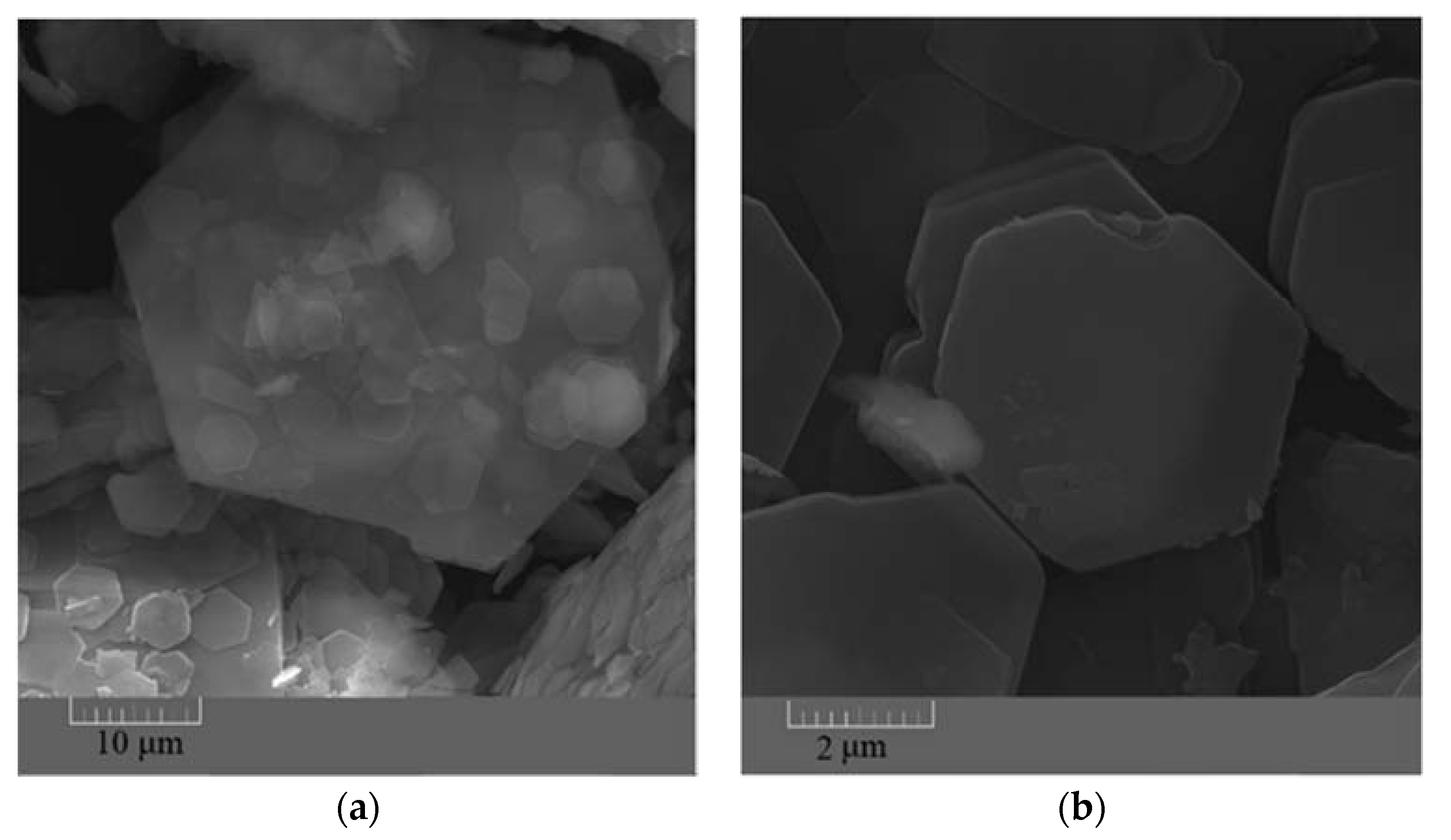


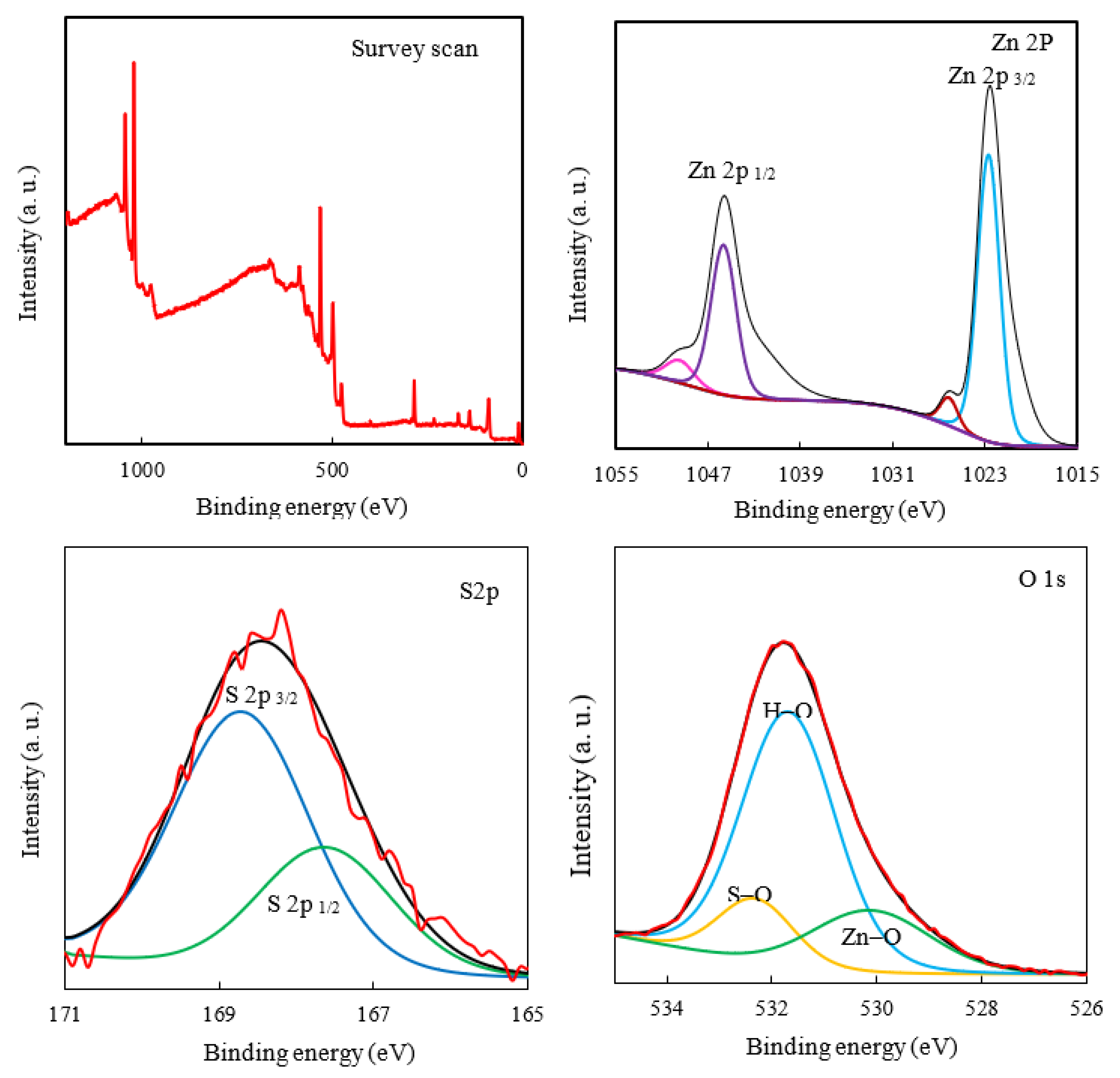
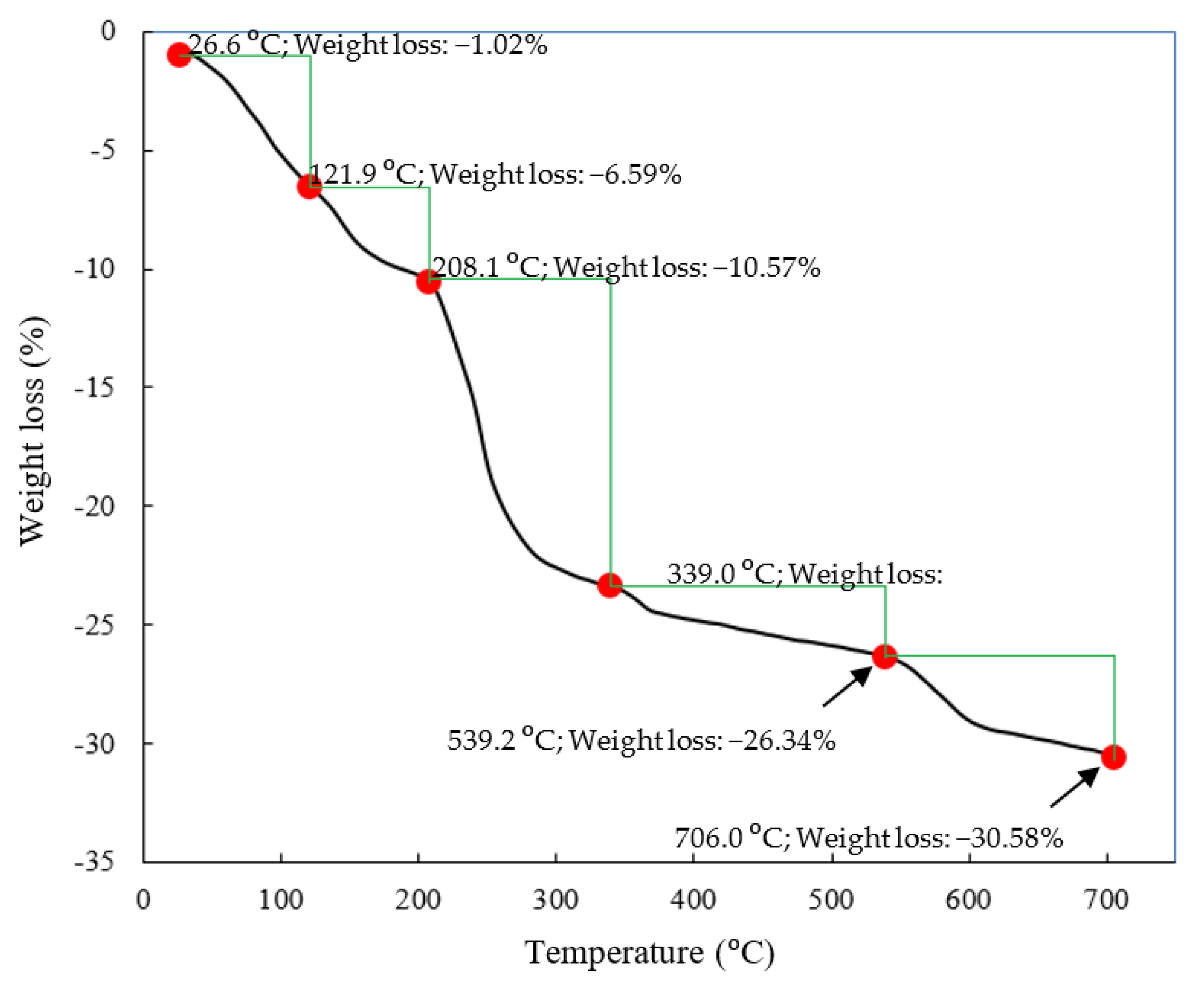

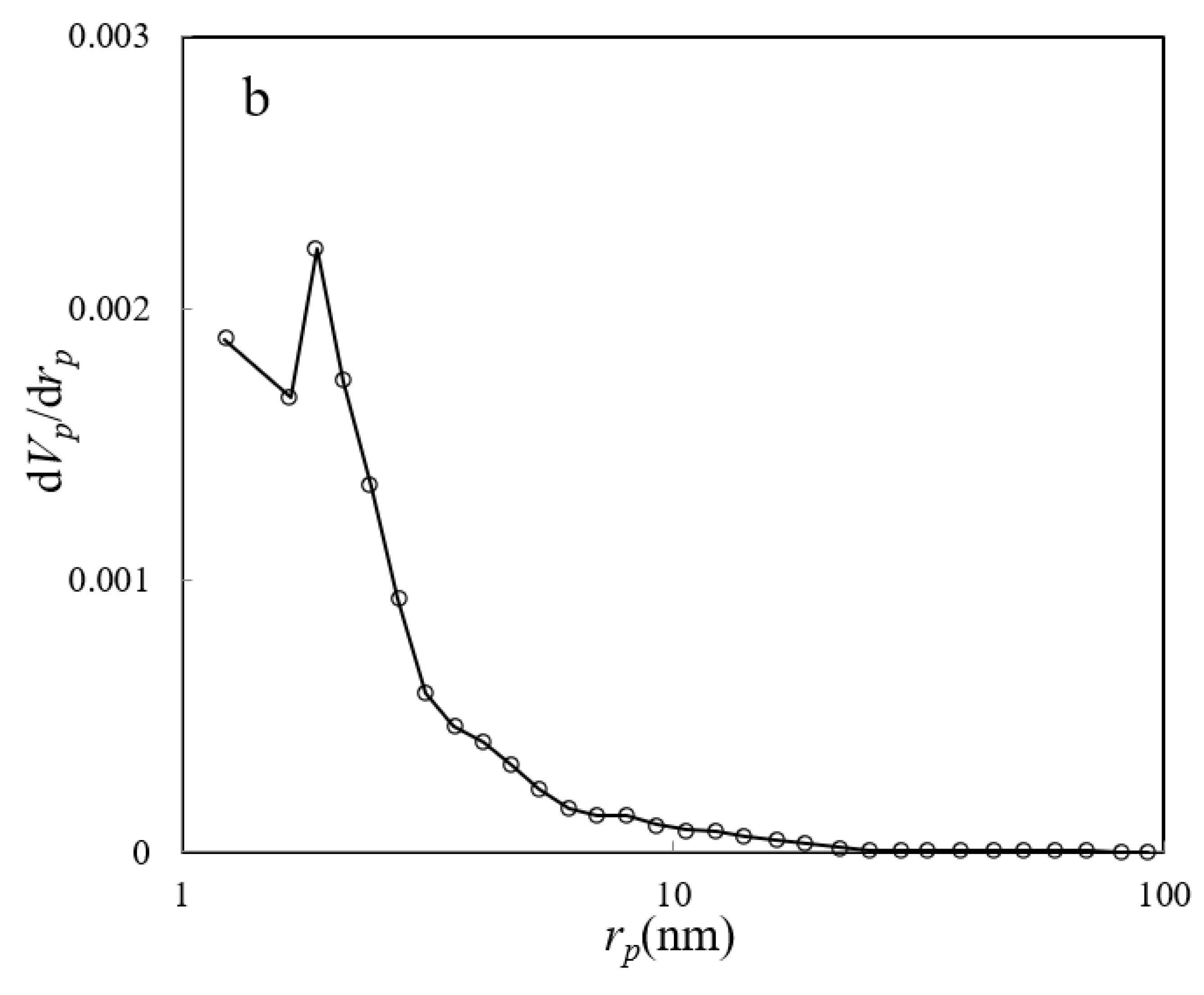

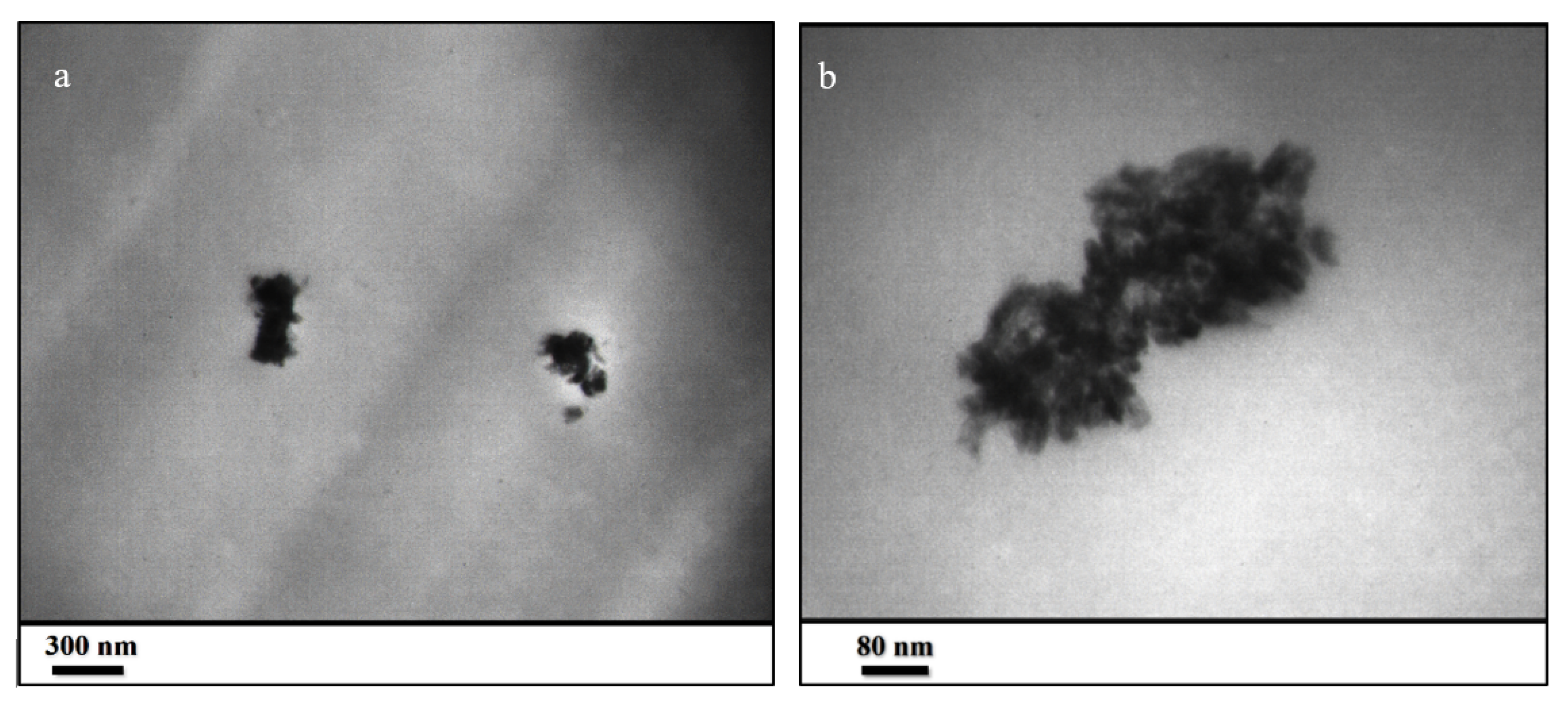
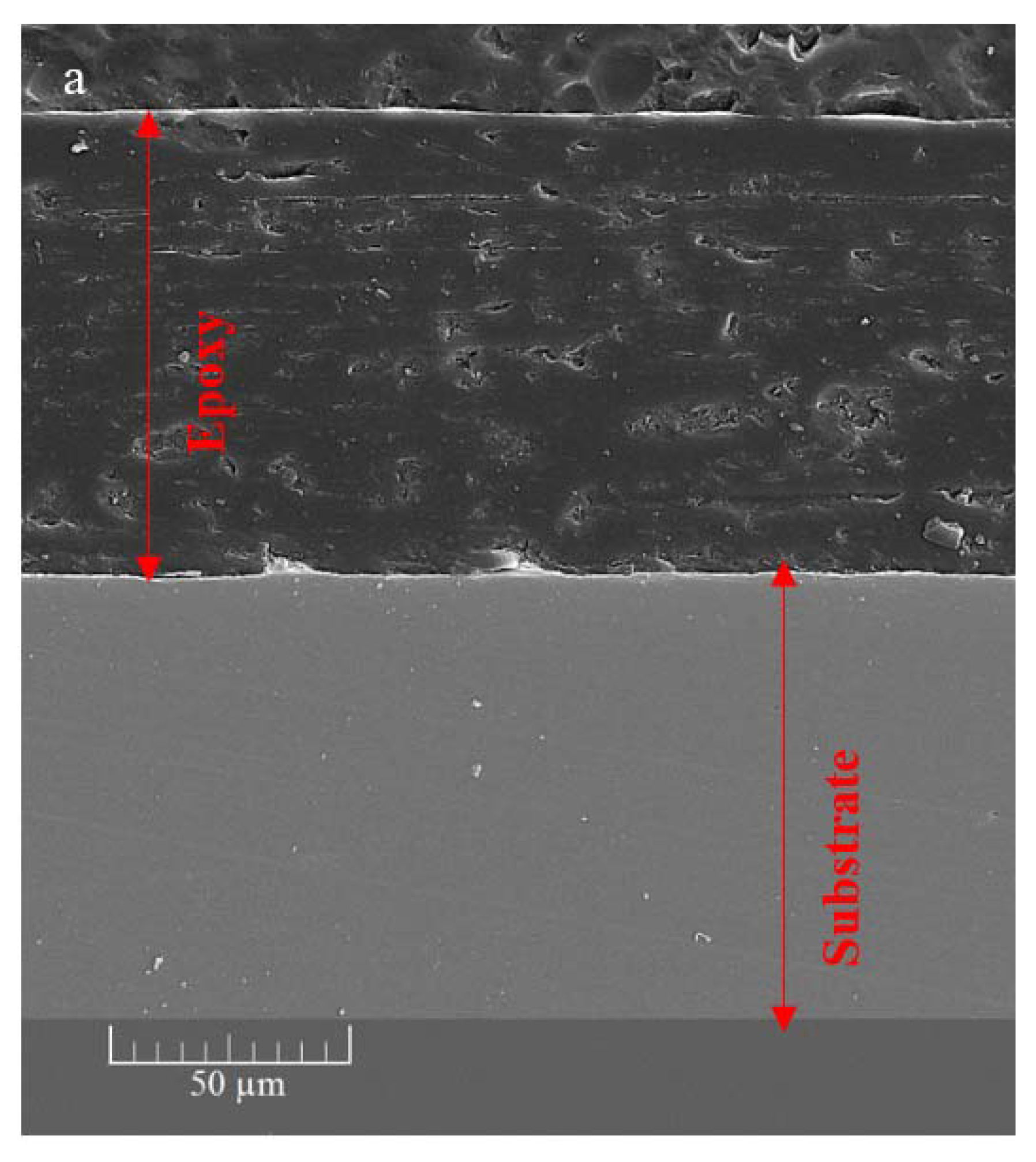
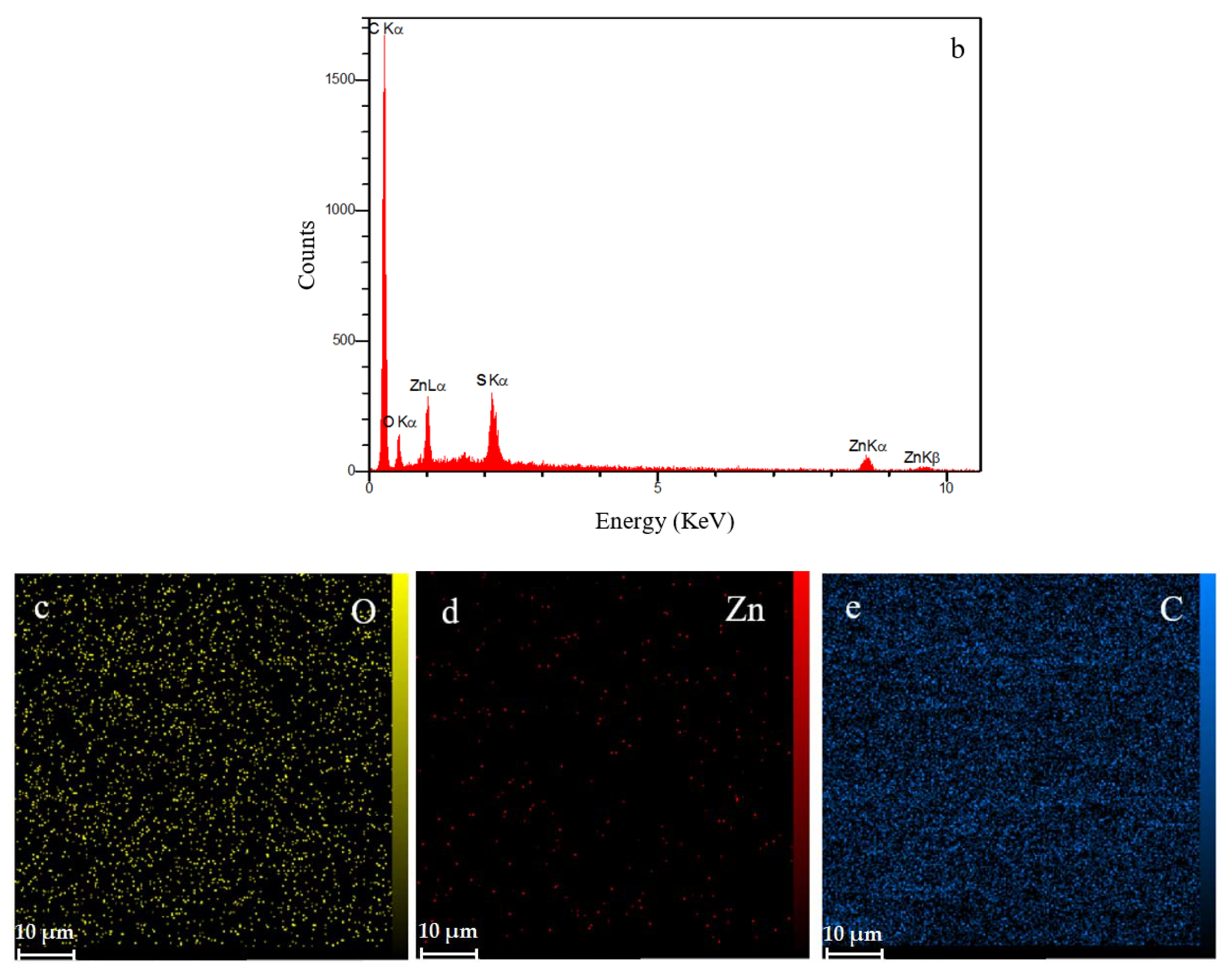
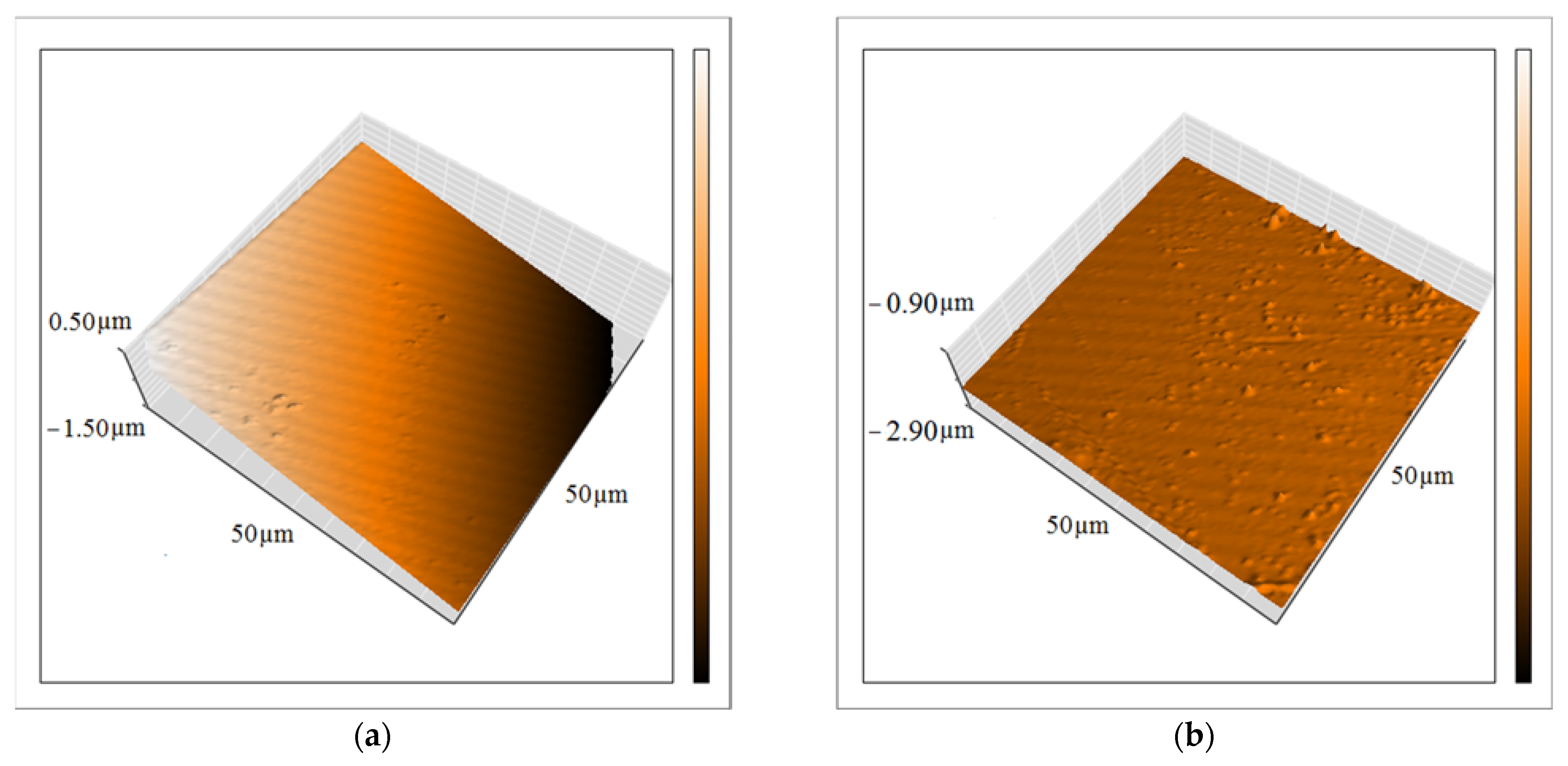
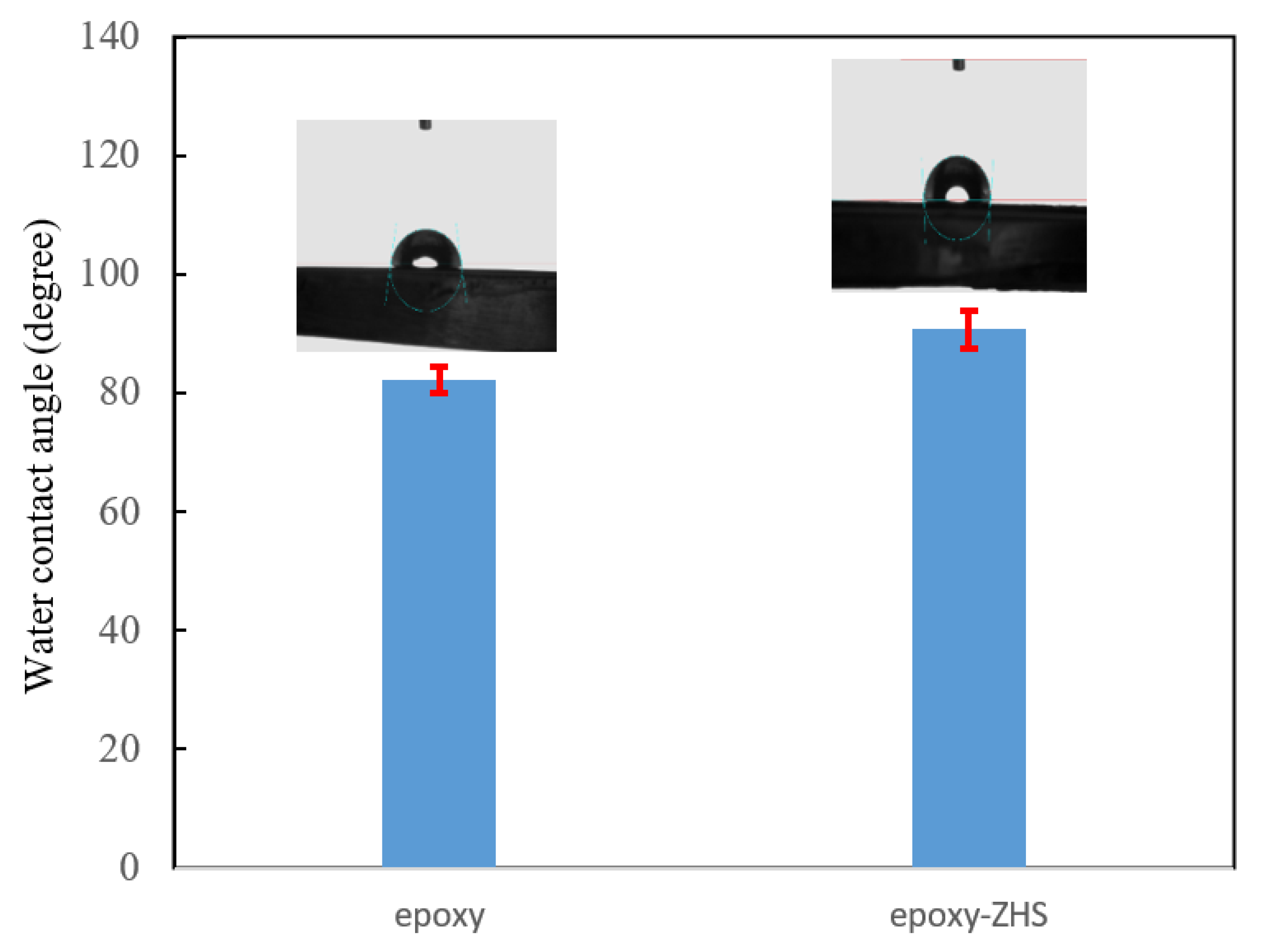

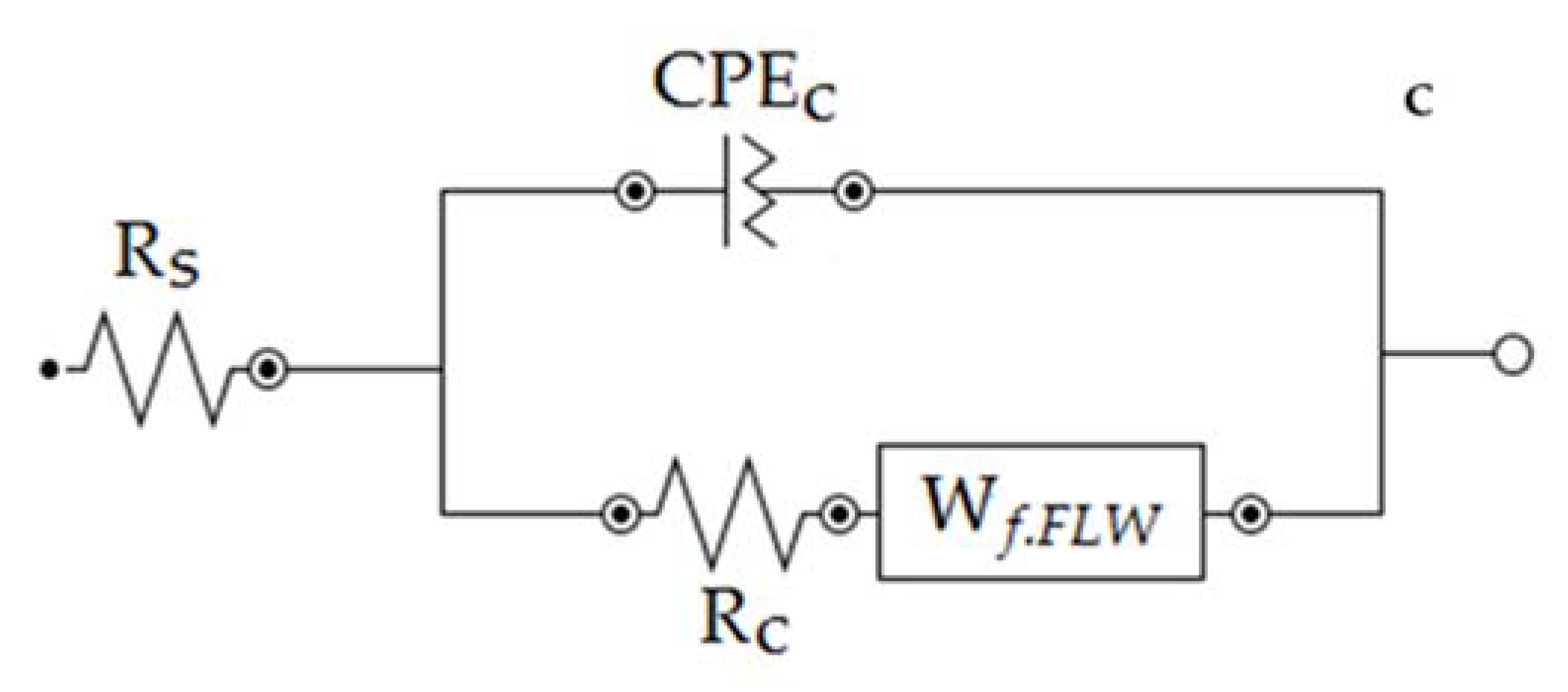
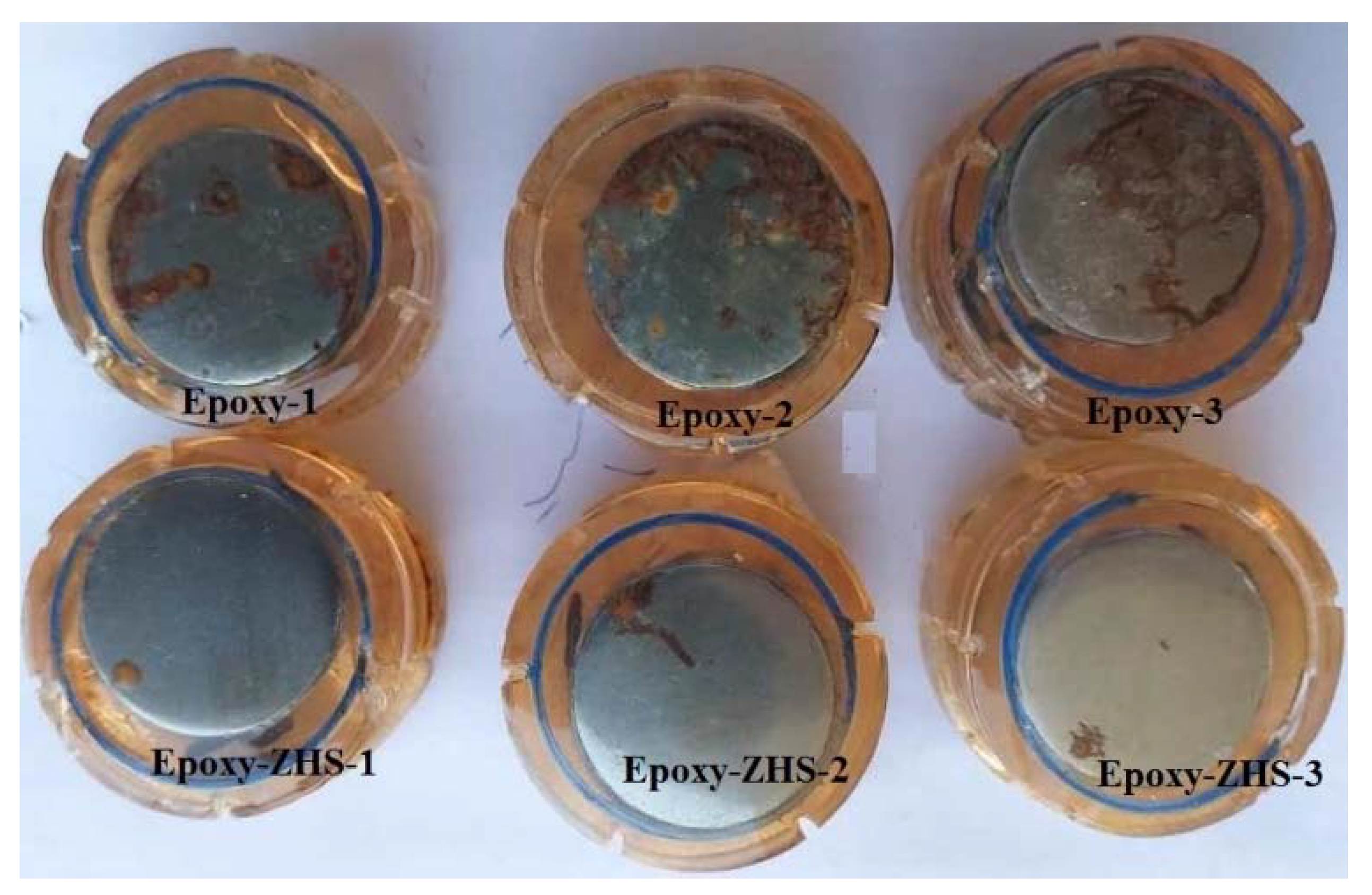
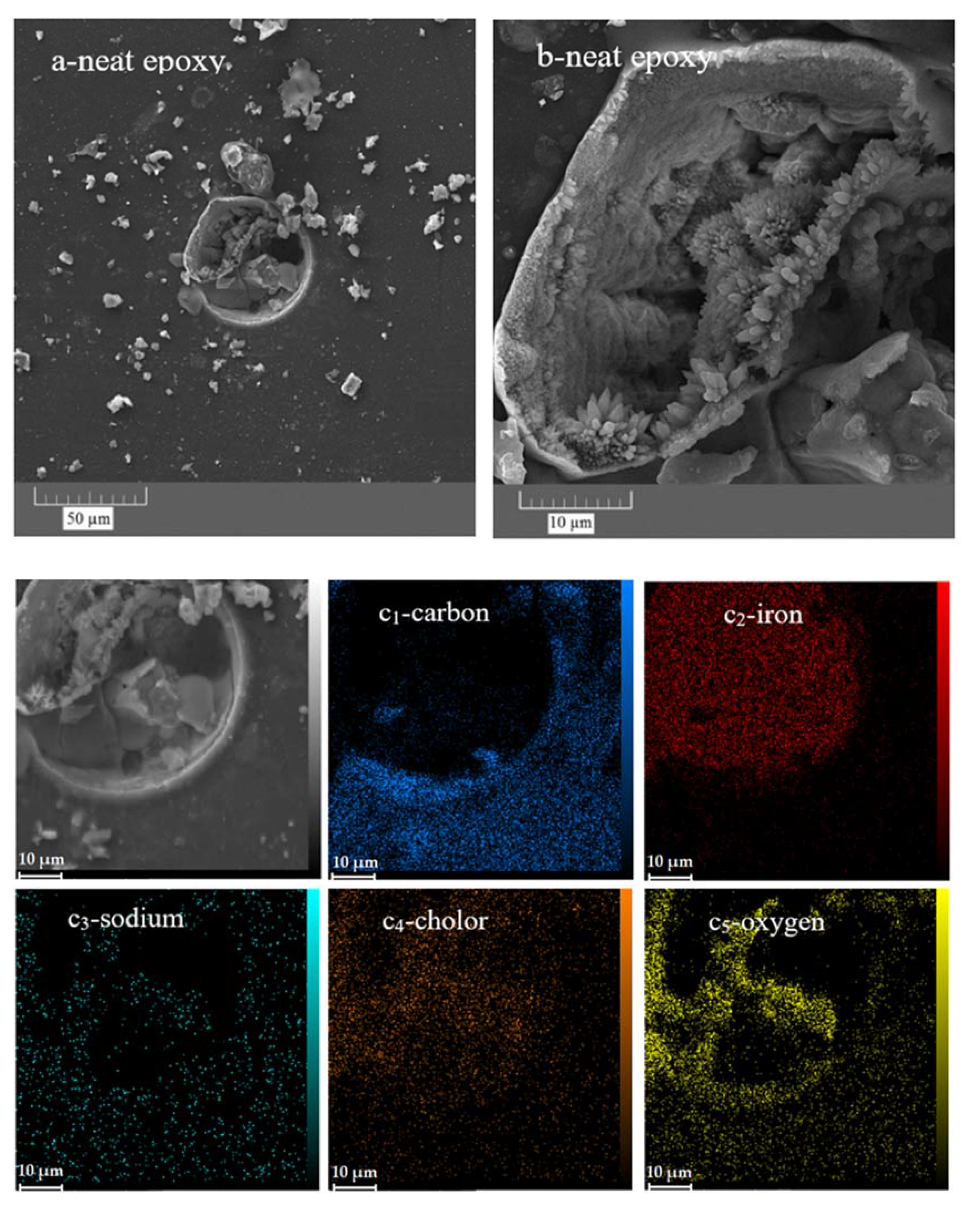
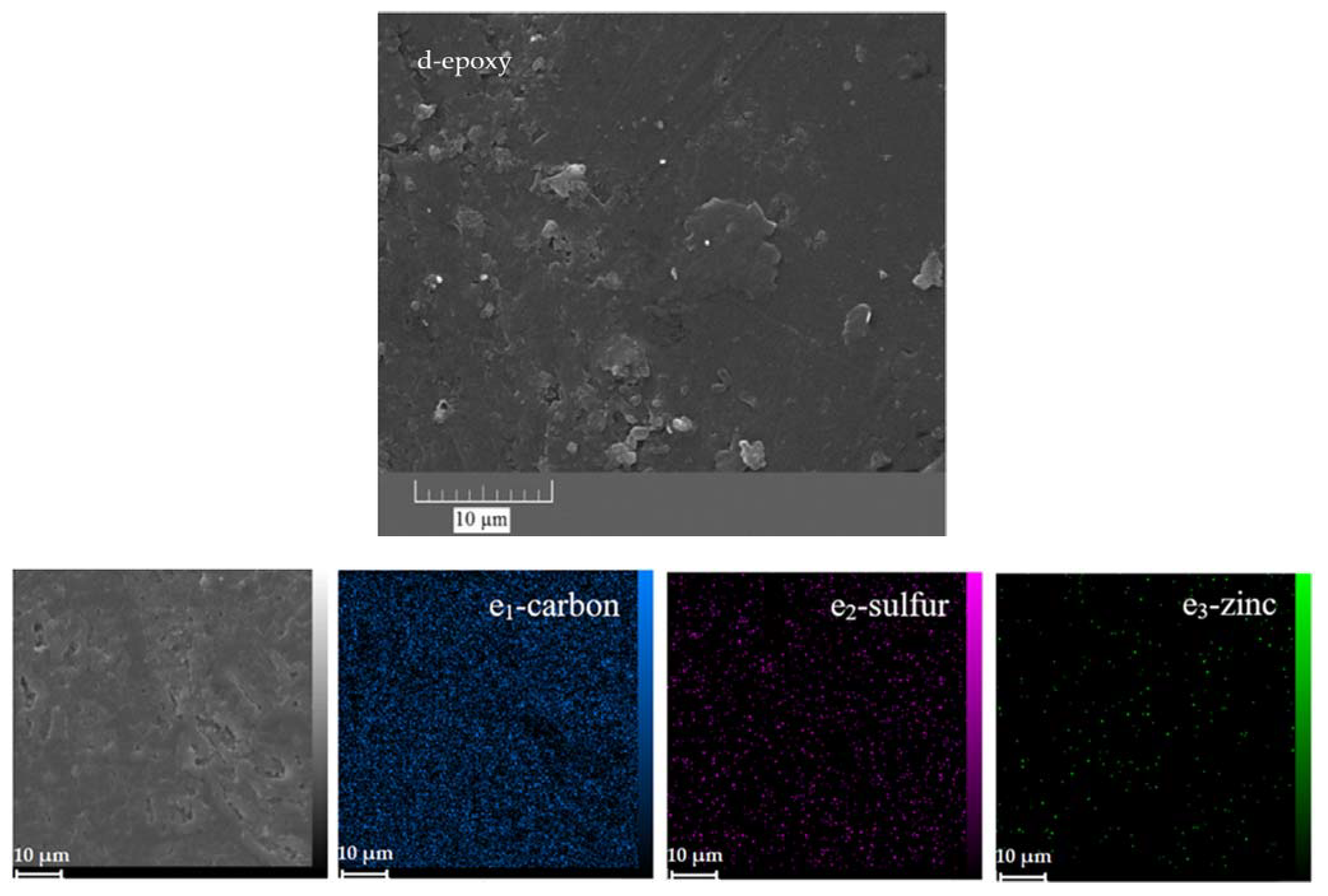
| Days | Sample | CPEc (nsnΩ−1cm−2) | nc | Rc (MΩ cm2) | Z₀ (MΩ cm2) | τ₀ (s) | nf.FLW | Rp (MΩ cm2) | Chi-Squared |
|---|---|---|---|---|---|---|---|---|---|
| 4 | Epoxy | 0.56 | 0.8914 | 1.25 | 3.57 | 99.5 | 0.327 | 4.82 ± 3.58 | 0.0066 |
| Epoxy-ZHS | 0.04 | 0.9998 | 0.53 | 8.33 | 8.5 | 0.489 | 8.86 ± 3.02 | 0.0136 | |
| 5 | Epoxy | 0.27 | 0.8990 | 1.67 | 3.81 | 56.5 | 0.349 | 5.47 ± 4.44 | 0.0050 |
| Epoxy-ZHS | 0.10 | 0.9278 | 0.77 | 7.25 | 8.9 | 0.494 | 8.02 ± 1.92 | 0.0047 | |
| 6 | Epoxy | 0.24 | 0.8980 | 1.56 | 2.98 | 43.0 | 0.333 | 4.54 ± 4.00 | 0.0049 |
| Epoxy-ZHS | 0.13 | 0.9072 | 0.70 | 6.25 | 8.5 | 0.473 | 6.96 ± 3.39 | 0.0076 | |
| 7 | Epoxy | 0.28 | 0.8879 | 0.80 | 1.59 | 41.5 | 0.341 | 2.39 ± 1.70 | 0.0084 |
| Epoxy-ZHS | 0.11 | 0.9193 | 0.80 | 6.62 | 10.6 | 0.453 | 7.42 ± 2.84 | 0.0091 | |
| 10 | Epoxy | 0.23 | 0.8924 | 1.09 | 2.96 | 15.5 | 0.372 | 4.05 ± 4.84 | 0.0084 |
| Epoxy-ZHS | 0.07 | 0.9523 | 0.99 | 7.40 | 26.1 | 0.392 | 8.39 ± 3.81 | 0.0126 | |
| 14 | Epoxy | 0.25 | 0.8789 | 0.61 | 1.88 | 63.7 | 0.314 | 2.48 ± 2.46 | 0.0053 |
| Epoxy-ZHS | 0.44 | 0.9134 | 1.04 | 6.69 | 22.9 | 0.390 | 7.73 ± 4.50 | 0.0062 | |
| 21 | Epoxy | 0.21 | 0.8762 | 0.70 | 2.14 | 41.7 | 0.346 | 2.84 ± 2.44 | 0.0147 |
| Epoxy-ZHS | 0.14 | 0.9199 | 1.10 | 10.38 | 47.8 | 0.354 | 11.47 ± 9.33 | 0.0045 | |
| 28 | Epoxy | 0.32 | 0.8513 | 0.55 | 1.49 | 47.9 | 0.275 | 2.03 ± 2.44 | 0.0100 |
| Epoxy-ZHS | 0.07 | 0.9027 | 1.26 | 8.21 | 23.1 | 0.425 | 9.47 ± 8.83 | 0.0077 |
Disclaimer/Publisher’s Note: The statements, opinions and data contained in all publications are solely those of the individual author(s) and contributor(s) and not of MDPI and/or the editor(s). MDPI and/or the editor(s) disclaim responsibility for any injury to people or property resulting from any ideas, methods, instructions or products referred to in the content. |
© 2023 by the authors. Licensee MDPI, Basel, Switzerland. This article is an open access article distributed under the terms and conditions of the Creative Commons Attribution (CC BY) license (https://creativecommons.org/licenses/by/4.0/).
Share and Cite
Aliahmadi, F.; Seifzadeh, D.; Samadianfard, R.; Dikici, B. Incorporation of Zinc Hydroxide Sulphate (ZHS) Nanoplates into Epoxy Resin to Improve Its Corrosion Protection. Minerals 2023, 13, 180. https://doi.org/10.3390/min13020180
Aliahmadi F, Seifzadeh D, Samadianfard R, Dikici B. Incorporation of Zinc Hydroxide Sulphate (ZHS) Nanoplates into Epoxy Resin to Improve Its Corrosion Protection. Minerals. 2023; 13(2):180. https://doi.org/10.3390/min13020180
Chicago/Turabian StyleAliahmadi, Fateme, Davod Seifzadeh, Roghaye Samadianfard, and Burak Dikici. 2023. "Incorporation of Zinc Hydroxide Sulphate (ZHS) Nanoplates into Epoxy Resin to Improve Its Corrosion Protection" Minerals 13, no. 2: 180. https://doi.org/10.3390/min13020180
APA StyleAliahmadi, F., Seifzadeh, D., Samadianfard, R., & Dikici, B. (2023). Incorporation of Zinc Hydroxide Sulphate (ZHS) Nanoplates into Epoxy Resin to Improve Its Corrosion Protection. Minerals, 13(2), 180. https://doi.org/10.3390/min13020180






